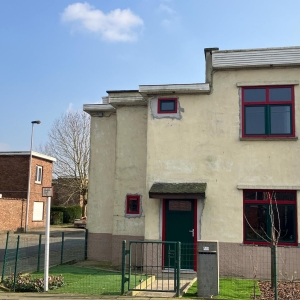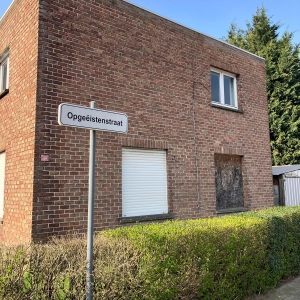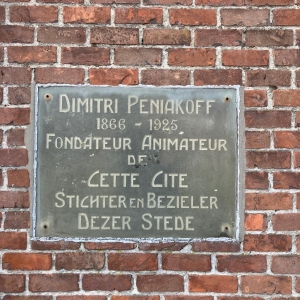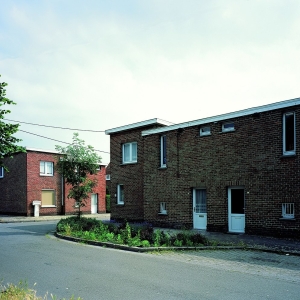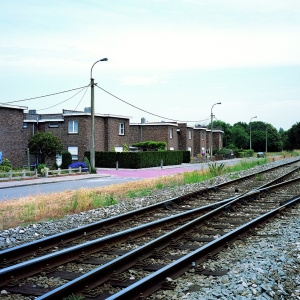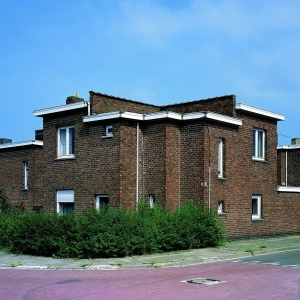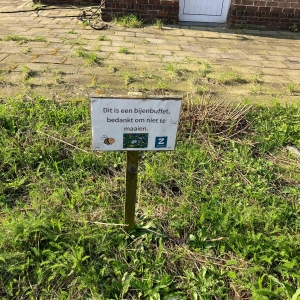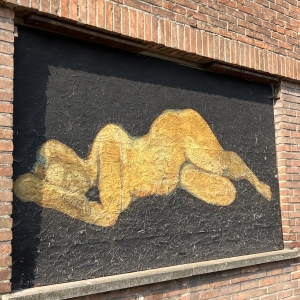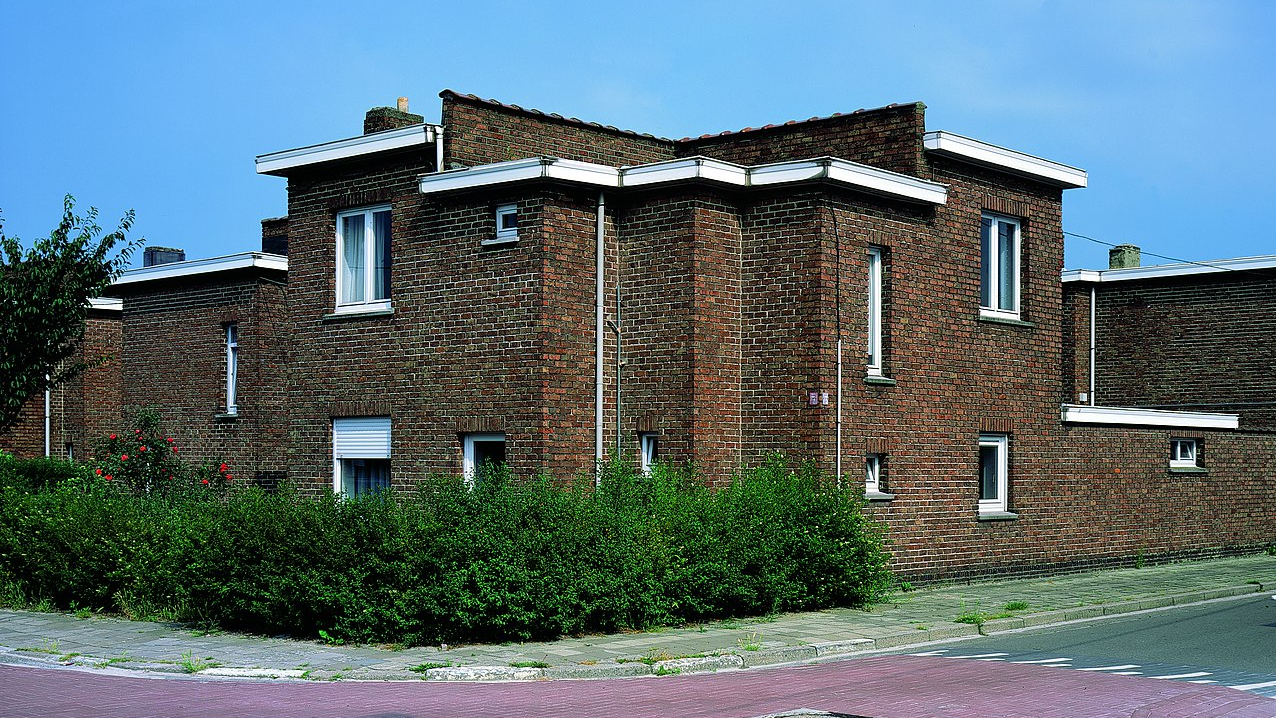
Tuinwijk Klein Rusland
Zelzate, Belgium
The Klein Rusland garden suburb is Belgium's first modernist garden suburb.
| Garden City Type: | Mixed (housing association / municipality / other) |
| Country: | Belgium |
| City: | Zelzate |
| Years of construction: |
1921 Start construction 1927 Completion
|
| Initiator/client: | Nationale Maatschappij voor Goedkope Woningen en Woonvertrekken |
| Architect or related: |
Huib Hoste Huib (Hubert) Leon Bruno Jean Marie Hoste (1881 – 1957) was a Belgian architect, designer and city planner. After the outbreak of World War I, he fled with his family to the neutral Netherlands, where he had also travelled before. He got to know the work of various Dutch architects and artists and came to believe in the necessity of |
| Heritage status: | Yes |
| Explanation: | The linked houses at Kardinaal Mercierplein 3-4 and 15-16 are listed buildings. |
| General condition of Garden City: | Bad condition |
General description
Following the widening and deepening of the Ghent-Terneuzen canal between 1870 and 1885, the industrialisation of Zelzate took off. To house industrial workers, a social housing company (Société Coopérative Locale des Habitations à Bon Marché de Selzaete) was founded in 1920 under the impetus of the state, the province and the municipality, and with the cooperation of local industrialists.
Architect Huib Hoste and urbanist Louis Van der Swaelmen designed a garden suburb of 300 dwellings with a sports courts and a bachelor house with 25 rooms. Because of financing problems – the society could not get the houses sold – only 168 houses were implemented, together with a 31-room bachelor house and a water tower.
Klein Rusland (Little Russia) ows its name to Russian engineers Dimitri Peniakoff (1865-1925), director of the nearby aluminium factory and the housing company involved, as well as Alexis Veretennicoff (1860-1927), a deposed governor of the Kiev province who ended up in Zelzate as a refugee and – through Peniakoff's mediation – became a supervisor in the construction of the district. Veretennicof and his wife also became the neighbourhood's first resident.
Architecture / Urban planning
The district layout combines the principles of the line city (central axis) and the garden district (varied street pattern). Louis Van der Swaelmen looked to the design principles of the garden suburb for inspiration: well-defined, concentrated development with free, green space around it, and a varied street layout with a clear hierarchy between main roads, secondary roads and pedestrian roads. There was also attention to visual composition, such as applying closed perspectives by turning corner houses and designing curved or kinked streets with staggered building lines. There were front gardens and various squares and parks were created. At the same time, rational land use and hygiene (including optimal sunlight) were taken into account. Equally important from the garden city principle were the shops, which made the district more self-sufficient.
The architectural design was partly traditional, but most houses were built in a cubist design of on-site cast ash concrete, colourful plastering, staggered volumes, flat projecting roofs and canopies, and brightly coloured joinery.
The architectural and urbanistic elaboration of Little Russia was at the forefront of international developments in the genre in the 1920s and the architecture of the neighbourhood was influenced by De Stijl design. (Huub Hoste had spent time in the Netherlands during WWI.)
After World War II new houses were built, while renovations partly obscured the modern aesthetic (almost all pre-war houses
Recent developments
Dilapidation, vacancy and the possible construction of a new tunnel under the Ghent-Terneuzen canal threatened the neighbourhood. In 2020 Flanders decided that it would be best to demolish the neighbourhood because the houses were too rundown. The residents' protest against permanent demolition was heeded and in 2020 the social housing company seeking to rebuild the district was given six months by the then minister to draw up a plan for the future.
Sources
- Public record
Agentschap Onroerend Erfgoed [in Dutch]

